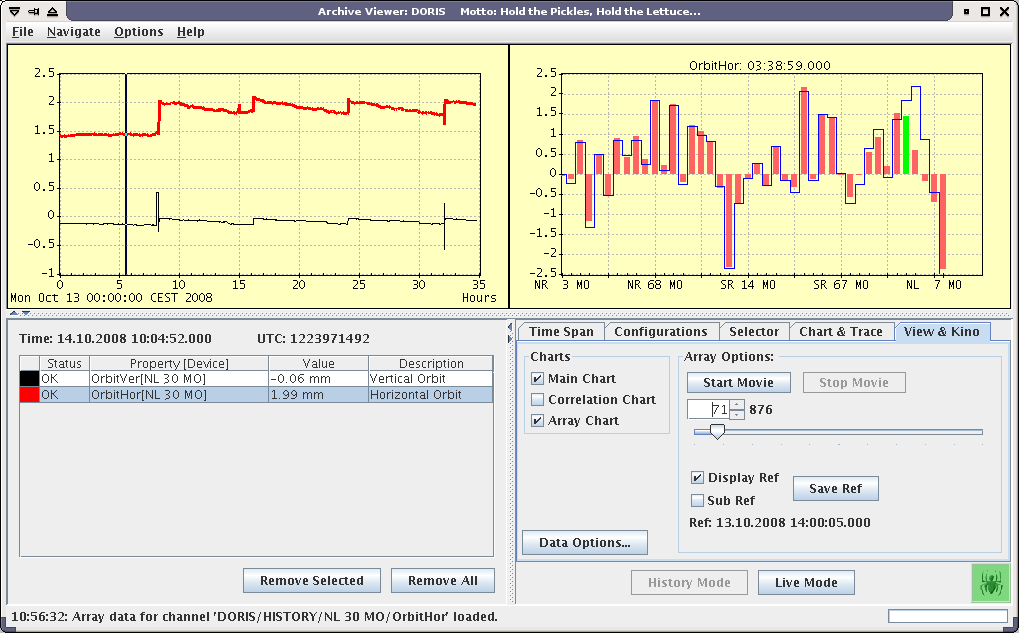

Archive Viewer is a feature rich trend chart for examining different types of channels. The application runs in two different modes: live and history. In history mode the viewer will present the history of the selected channels between the selected dates and when using the live mode, the viewer will show a recent history (defined by the user) and append live data to the trend lines with 2 seconds polling time.
The Archive Viewer allows browsing for the properties and adding different properties/devices to the same trend chart. It can also accepts drop events from other applications or complete channel names from a text-flavored drag. Upon adding, the channel will be added to the list of active trends and data will be loaded from the archive server. The viewer then allows user to use different visualization features to examine the values of the channel. And if the selected channel is a multi-channel, the user can even see the multi-channel array for each particualar timestamp from the trend chart.
Archive Viewer can be started by running the java class.
de.desy.tine.apps.ArchiveViewer
This will start a plain Archive Viewer, with empty charts.
Run the Archive Viewer with Java Webstart (only accessible from DESY internal network).
Archive Viewer supports all start-up parameters defined in the common features section. In addition several others parameters can be supplied to preconfigure the application.
Example: we want to start the archiver in the local mode, with selected context DORIS. In addition we want to add several properties. We want the Temp property to be immediately visible on the chart however, the Pressure property should remain hidden until the user decide to show it. We will use system parameters:
java -Dav.mode=local -Dav.machine=DORIS
-D-CDORIS/ARCHIVER/#0/Temp -D-IDORIS/ARCHIVER/#0/Pressure
-cp [classpath] de.desy.tine.apps.ArchiveViewer